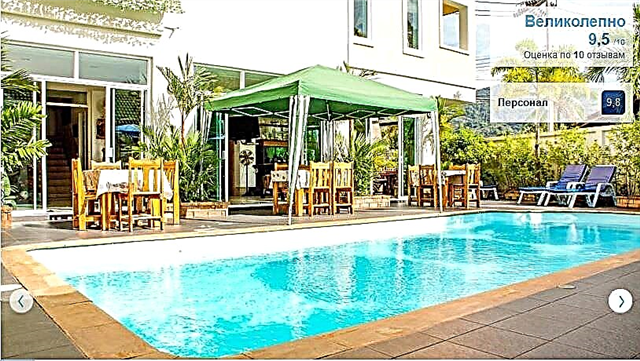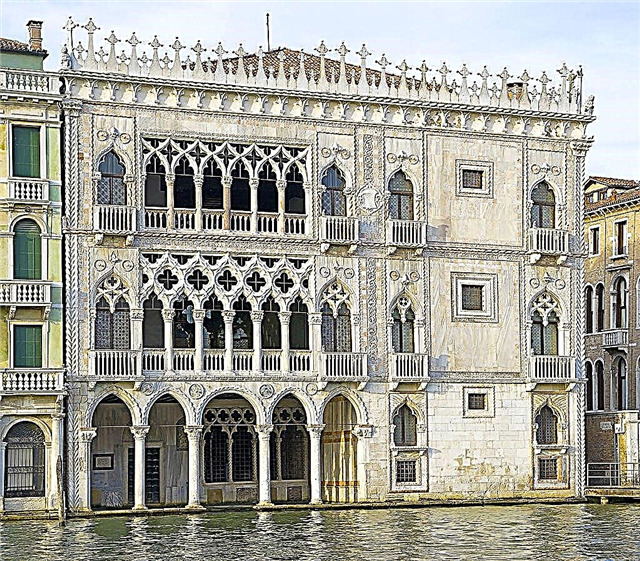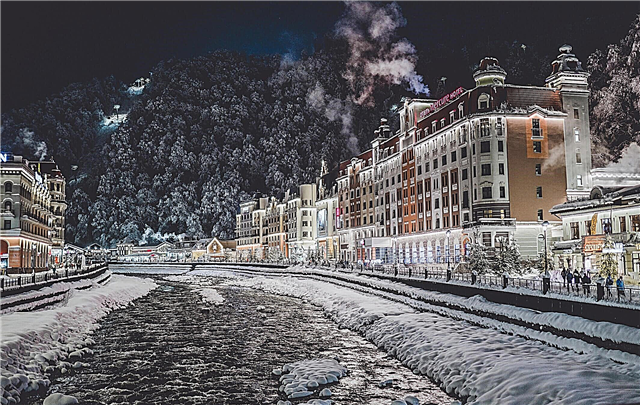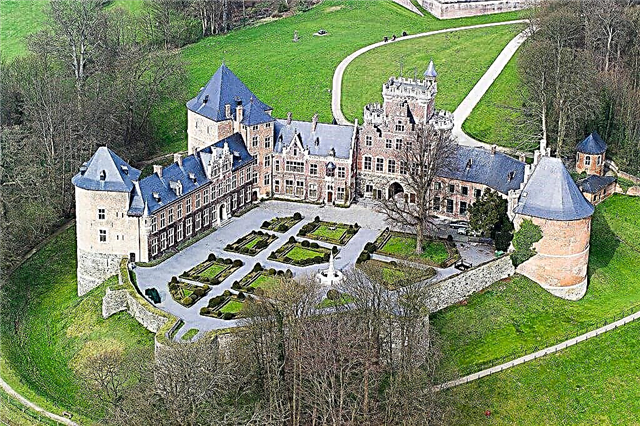Belgium is one of the relatively young states in Europe. But, despite this, the history of the country began in the early Middle Ages. Due to the location on the borders of the spheres of influence of the leading European states - Great Britain, France and Germany, the territory of modern Belgium has always been strategically important.
That is why hundreds of castles built in different eras have survived here. Today, the castles of Belgium attract thousands of tourists from all over the world. All the architectural styles typical for Europe from the 5th-7th to the 17th centuries are collected here. Apart from their architectural significance, the Belgian fortresses are important historical monuments. They captured in themselves not only the development of an individual country, but also the history of all of Europe.
The most interesting medieval fortresses in Belgium
List, photos with names and descriptions of ancient castles!
Beloy
The castle is located near the town of As, in the eastern part of Belgium. The fortress was erected at the end of the XIV century, but soon became not a defensive structure, but the residence of the wealthy Belgian Liny dynasty. Around the castle there is a park with an area of about 120 hectares, and in the inner halls there is a collection of paintings and an extensive library, which contains more than 20 thousand books.

Castle of the Counts of Flanders
The first fortifications on the site of the castle in Ghent were built to protect against the Vikings in the 9th century. The modern fortress was erected in 1180 and is almost completely preserved in its original form. The halls of the castle in different periods housed the mint, court and textile industry. After the restoration, the castle became a popular tourist attraction. Today, it houses a museum of justice and weapons.

Haasbeck
The modern castle, built in the style of the Renaissance, was erected at the end of the 19th century and was not a defensive structure. Before that, in the XIII century, a fortress was erected on the site of Gaasbek, destroyed in 1388 by the inhabitants of Brussels. Since 1924, a 19th century historical museum has been opened here, made up of the belongings of the Visconti Marquise, who lived here. These days, the museum is sponsored by Guerlain, which is why perfume tastings are regularly held here. Around the castle there is a park with a cascade of ponds.

Sten
The fortress was erected in 1200, in Antwerp, on the Scheldt River. Its main goal was to control the river. From the 14th to the 19th centuries, a prison was located here, and in the middle of the 19th century, most of the castle was destroyed to straighten the bed of the shallow river Scheldt. In the remaining citadel from the end of the 20th century, there is a maritime museum. Near the castle there is a monument to the hero of Belgian tales, Long Wapper, who frightens the townspeople, and Canadian soldiers.

Modaw
The first fortress was built here in the 13th century. Underground passages and a ditch were dug, towers and walls were erected. But later, in the 17th century, the new owner carried out a reconstruction. The fortress was rebuilt into a French-style summer residence. Nowadays, there is a museum here, where a lot of tapestries, furniture, faience and crystal sets are collected. There are gardens and fountains around the castle.

Bouillon
Bouillon is located near the French border. In the XI century, a castle of the same name was erected here. In 1096, Gottfried of Bouillon sold his land along with the castle to the church. With the money he received, he went on a crusade to Jerusalem. On the territory of the fortress in the 17th century, the Orval church and the brewery of the same name were erected. In summer, performances with the participation of birds of prey are regularly held here.

Vev
The fortress was built between the 9th and 12th centuries, the exact date is unknown. Since its construction, it has been owned by the Lidekerke-Beaufort family. Throughout its history, the castle was taken by storm only once. Six round towers adorn the corners of the fortress walls, and one of the facades has a large clock. The halls of the castle contain collections of armor, furniture and paintings. The corridors are decorated with tapestries and portraits of members of the Lidekerke-Beaufort family.

Shime
The first tower of the castle dates back to the 11th century. Later, walls and other fortifications were erected. The famous French revolutionary Teresa Talien lived here. In the 18th century, at her suggestion, a French-style theater was built in the garden of the fortress. Later it was restored and is still in operation. It hosts musical performances.

Dinan Citadel
At an altitude of over 100 meters, an impregnable fortress is located on a cliff in the city of Dinan. According to local legend, it was founded in the 4th century by the emperor of Rome, Constantius II. But according to official data, the citadel was built in the XI century. Despite its advantageous location, it was captured many times. So, during the Second World War, more than 50 French soldiers were killed here, who defended the castle and were trapped in an underground gallery. Today it houses a military museum.

Alden Biesen
The castle was built in the XII century and was originally the property of the Teutonic Order. Thousands of people made pilgrimages to the local church with the image of the Virgin Mary, which was considered miraculous. Modern buildings and fortifications were erected in the 16th century, forming a castle complex with an area of 56 hectares. In the 19th century, Alden Biesen was abandoned, and in the 20th century there was a fire here. After the reconstruction, the castle became a popular tourist attraction and a place for cultural events.

Gerald Devil's castle
The castle, built in the XIII century, was built in the Gothic style. On its territory there are many fortifications and a large crypt. The fortress got its name from the name and nickname of the owner, Gerald Vilian. Many legends explain his nickname. Some say that he was called the Devil for his black hair and dark skin. Others claim that he killed five of his wives in order to marry again without divorce.

Freyr
The castle on the Meuse River was built in the 13th century. From the beginning of the 15th century to the present day, it belongs to the de Beaufort family. The interior of the castle is varied; many different styles can be found in its halls. Many exhibits are collected here, including the children's carriage, which received the prize of the World Exhibition in Paris. There are French-style gardens and fountains around the fortress.

Laveau-Sainte-Anne
The modern fortifications were erected in the middle of the 15th century, although there are earlier references to the fortress. During the civil and internecine wars in Belgium, the castle was destroyed many times. It was restored only in the first half of the 20th century. Today there is a peasant museum and a nature museum, and a small garden is laid out in the courtyard.

Arenberg
The castle was built in the XII century. It combines Renaissance and Gothic architectural elements. From the middle of the 15th century, it passed into the possession of the German Arenberg family. During the First World War, the owner of the fortress provided assistance to the German troops. For this, the castle was confiscated in 1921 and sold to the nearest university. The faculty of the University of Leuven is still located here.

Jee
The first fortifications were built here by the Celts, before the Roman conquest. Modern buildings in the classic Renaissance style were erected in the 16th-17th centuries. A deep and wide moat has been dug around the castle, giving the impression that the fortress is located on an island. The halls contain a collection of ancient tapestries, furniture and ancient geographical maps.

Bersel
The modern red brick castle was built at the beginning of the 14th century to protect Brussels from attacks from the south. Due to the disadvantageous location on the plain, a wide moat was dug around the small fort, and the height of the walls was increased. The main buildings of the castle have survived to this day. Historical museums are located inside the towers and galleries.

Weynendaal
Back in the 9th century, the Gauls built fortifications on the site of a modern castle to protect them from the Vikings. At the end of the 11th century, a fortress was erected.The castle and its courtyard are almost perfectly circular in shape, as can be seen in aerial photographs. Today the fortress is surrounded by a moat and a picturesque garden is laid out inside. The castle is the private property of the Mathieu family, so only the museum in the left wing is open for visits.

Oydonk
The exact date of the construction of the first fortifications is unknown, but from the XIV century the castle became a noble residence. In the Middle Ages, it was part of the chain of defensive fortresses that defended the city of Ghent. The castle was built of Spanish bricks, in the style of the Italian Renaissance. Gardens are laid out around, and the fortress itself is surrounded by a moat. Today, the castle is only open on Sunday afternoons, as it is privately owned.

Renarsten
The cliff on which the castle is located was used for the construction of fortifications back in the Celtic era and during the Roman conquest. Later, in the XIV century, the foundations left over from ancient buildings were used to build a fortress. Until the 20th century, Renarsten was destroyed and abandoned many times. But from 1965 to 1970 it was restored by Professor Overloop, who invested most of his funds in the restoration.

Sterkhof
In the Middle Ages, here, in the suburbs of Antwerp, there was a farm surrounded by a moat. Only in the 16th century a noble residence was erected in its place. Until the end of the 17th century, Sterkhof was abandoned, and later the Jesuits settled here. In the XX century, the castle was included in the Rivirenhof park. Later, it housed a historical museum, museums of crafts and silver, but since 2014 they have been moved.

Ekuzin-Lalen
The first fortifications in the village of Ekuzin were built in the 12th century, and the present fort dates from the 13th century. Since the 16th century, Ekusin-Lalen lost its defensive significance and was rebuilt into a noble residence. A chapel was built in the Gothic style, the interior style of the castle changed. Today it houses collections of furniture and porcelain from the 17th-18th centuries.

Loppem
The relatively young mansion was built on the foundations of a 16th-17th century building, not far from Bruges. Lopem was built in the neo-Gothic style and has been well preserved to this day. The castle burned twice, and during the First World War, the Belgian headquarters was located here. The halls of the mansion house collections of paintings, furniture and stained-glass windows. And around it is a garden with a plant labyrinth.

Horst
In the 13th century, a small mansion was built near the settlement of Sint-Peters-Rod. Later, it was rebuilt and transformed many times, eventually becoming a fortified castle. Parks with canals, streams, ponds and alleys are laid out around the fortress. Most of the premises are under reconstruction. There is a restaurant on the territory of the castle.

Corroy-le-Chateau
The castle was built in the 12th century. Its owners were related to the French Capetian dynasty, so Corroy-le-Château was built using the architectural elements of the ancient Louvre. Until 2008, the castle belonged to the de Vianden family and their descendants, but was later sold due to inheritance disputes. There are parks around the fortress, the castle is open in the summer months.

Bournem
The fortress was erected on the foundations of ancient fortifications in the X-XI centuries, to protect against the raids of the Normans, on the Old Scheldt River. In the 19th century, under the leadership of Henri Beyer, the castle was rebuilt in the Renaissance style. Today Bournemme is privately owned, but open to visitors. The halls of the castle contain many prints and antique furniture, as well as a collection of horse carriages.

Laarne
The oldest buildings in the castle were built in the 12th century. In Srednye the fortress was surrounded by swamps for several kilometers. Later they were drained, and only the donjon, which looks more like a mansion, has survived to this day. It houses a history museum with a collection of tapestries and tableware. Gardens are laid out around the castle, and undergrounds are dug under it.

Rumbek
In the 9th century, the first buildings were erected on the territory of the modern castle. Later Rumbek became the seat of the Tienne noble family. It was never fortified and was originally erected as a residence. Therefore, in the XVI-XVII centuries, it was repeatedly raided by local robbers. There is a park around the castle. Rumbek is also one of the oldest Renaissance castles.

Renesse
The first fortifications were built here in the 15th century, but already in the 16th, the castle was almost completely destroyed. Only the keep and the chapel have survived. The Renesse was later rebuilt. During the First and Second World Wars, it was captured by German troops and partially destroyed. Today, there is a historical museum, concerts and cultural and historical events are regularly held here.

Vissekerke
The modern castle was built on the site of an ancient fortress that existed since the 10th century. In the 15th century, reconstruction was carried out and most of the modern buildings were erected. At the end of the 19th century, a forged suspension bridge, one of the oldest in Europe and worldwide, was thrown across the moat surrounding the castle. It has survived to this day. Gardens are laid out around the castle, and a history museum is organized inside.

Miranda
The castle was built in the 19th-20th centuries, near the town of Sel, under the direction of the architect Edward Milner. After World War II, the Belgian Ministry of Transport set up a children's sports camp here, but in the late 1970s it was closed due to rising costs. Since the end of the 20th century, Miranda Castle has been abandoned and is in a dilapidated state.












